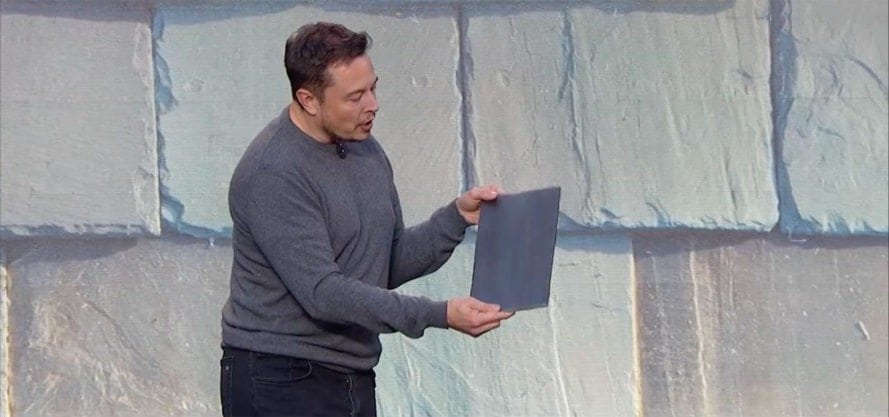Once again we see Tesla changing industries left and right as the company announced the successful completion of its first solar roof installation last week. Similar to the Model 3 deal, the first solar roof customers are Tesla employees. Selling to employees first allows the company to work out any kinks and issues found in the sales and installation process before releasing it to the public. Musk himself is a customer, installing the solar roof on his own house, as is Tesla CTO J.B. Straubel.
One of the more impressive parts of the solar roof is its modest aesthetic. While most solar panels are obtrusive, Tesla’s solar roof uses smooth black tiles that are virtually indistinguishable from standard roofing. While they may look typical, the panels allow light to pass through onto a solar cell embedded beneath the surface. According to Bloomberg, the solar panels run at $42 per square foot, including materials and installation. It’s a competitive price compared to the standard terracotta roof tiles, which can run closer to $50 per square foot.
Initial sales will be limited due to manufacturing capacity. However, as production grows in 2018, sales will begin in the U.K., Australia, and elsewhere. Additionally, they plan to introduce terracotta and slate versions of the solar roof. The manufacturing of the tiles began in Tesla’s Fremont solar plant in California, but will shift later this year to its new factory in Buffalo, New York.
Tesla began the development of the roof tiles after its $2.1 billion acquisition of SolarCity in November of 2016. They started accepting orders in May 2017, but have been relatively quiet about the product. However, with newly successful installations, it shouldn’t be long until those original orders are fulfilled.
With the solar roof, Tesla is making solar ownership more attractive and affordable by eliminating the need to install both a roof and solar panels. The company will manage the entire process of the roof installation, including the removal of existing roofs, design, permits, installation, and maintenance. Each installation should take about a week. With convenience, simple aesthetic, and affordability, this new roof may bring clean, solar power to homes across the country.











